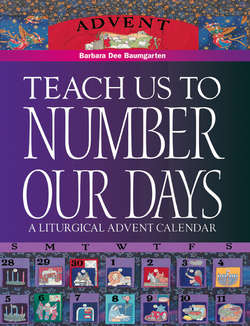Читать книгу Teach Us to Number Our Days - Barbara Dee Baumgarten - Страница 11
The Colors of Advent
ОглавлениеNo season is more colorful than Christmas. Although Advent is not Christmas, it contains colors distinct to its expectant and preparatory character.
They shall use gold, blue, purple, and crimson yarns.
—Exodus 28:5
Gold signifies the wealth of those who watch for Christ, the Sun of Righteousness and the King of kings.
Blue, especially ensign or ultramarine, signifies hopeful expectation. It symbolizes the “glorious impossible” of Christ fully human, and the vast expanse of God’s love, resembling the sky and waters, spreads over the entire earth. The dominant color of Advent, blue is traditionally associated with the Virgin Mary, whose constancy of faith reveals the goodness of God.
Purple, the color of royalty and power, heralds the coming of the King of kings. Purple reminds us that repentance and suffering lead to recognition of and alignment with God.
Crimson signifies the creative power of God evidenced in the fire of divine love, the blood of the martyrs and the Holy Spirit.
Rose, the color at dawn, heralds the imminent arrival of the sun—and Son. It is used on the Third Sunday of Advent.
White indicates Christ the Light, who is pure and holy love and the source of life. It is the color of Christmas.
Green represents the hope of spring and immortality.
* The calendar-making directions in chapter 9, section 7 (pp. 108-110), describe how to handle a date that urges two observances, such as when the First Sunday of Advent falls on the feast of St. Andrew.
* The P symbols signify major fixed dates to be made permanent on the calendar.
